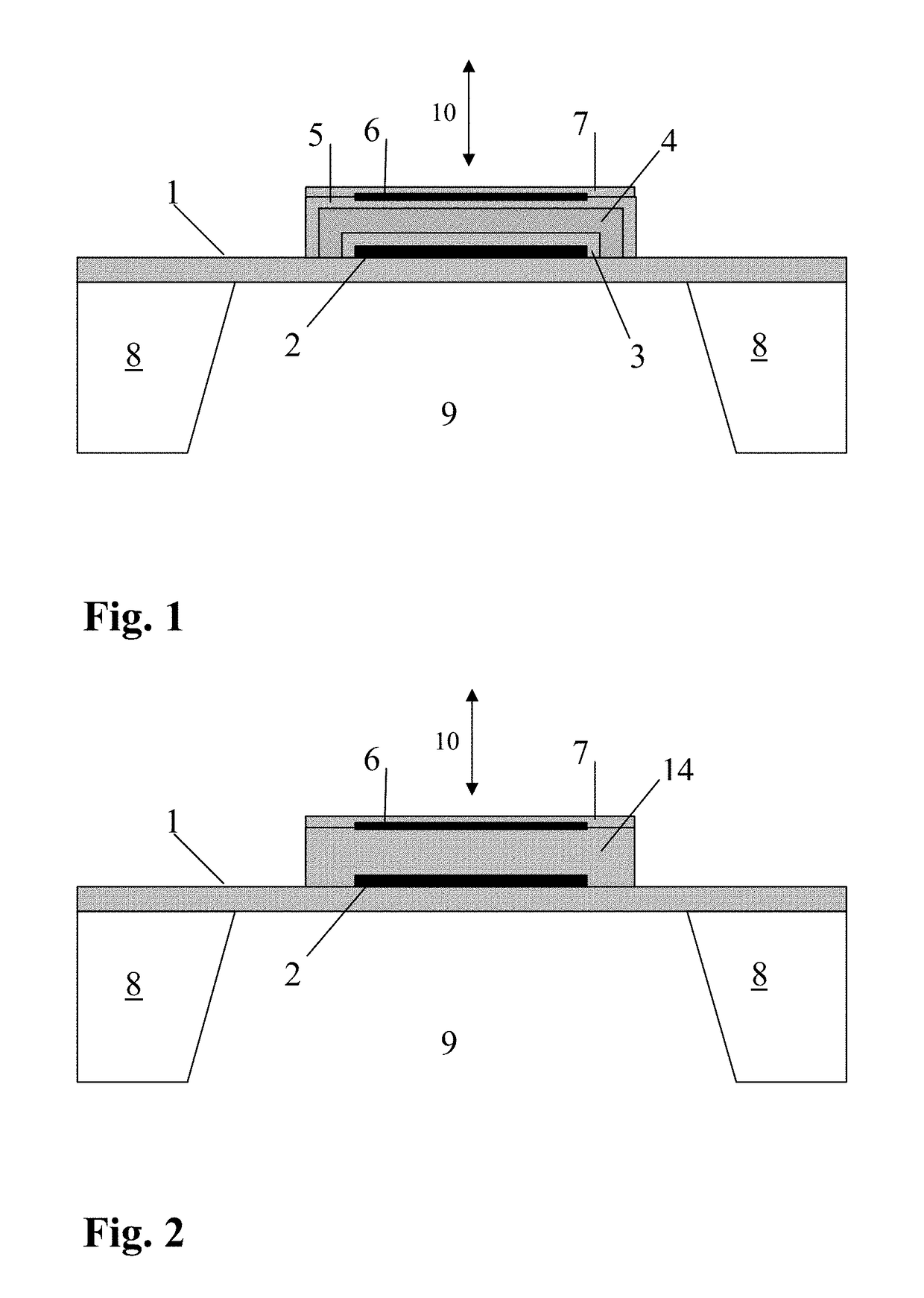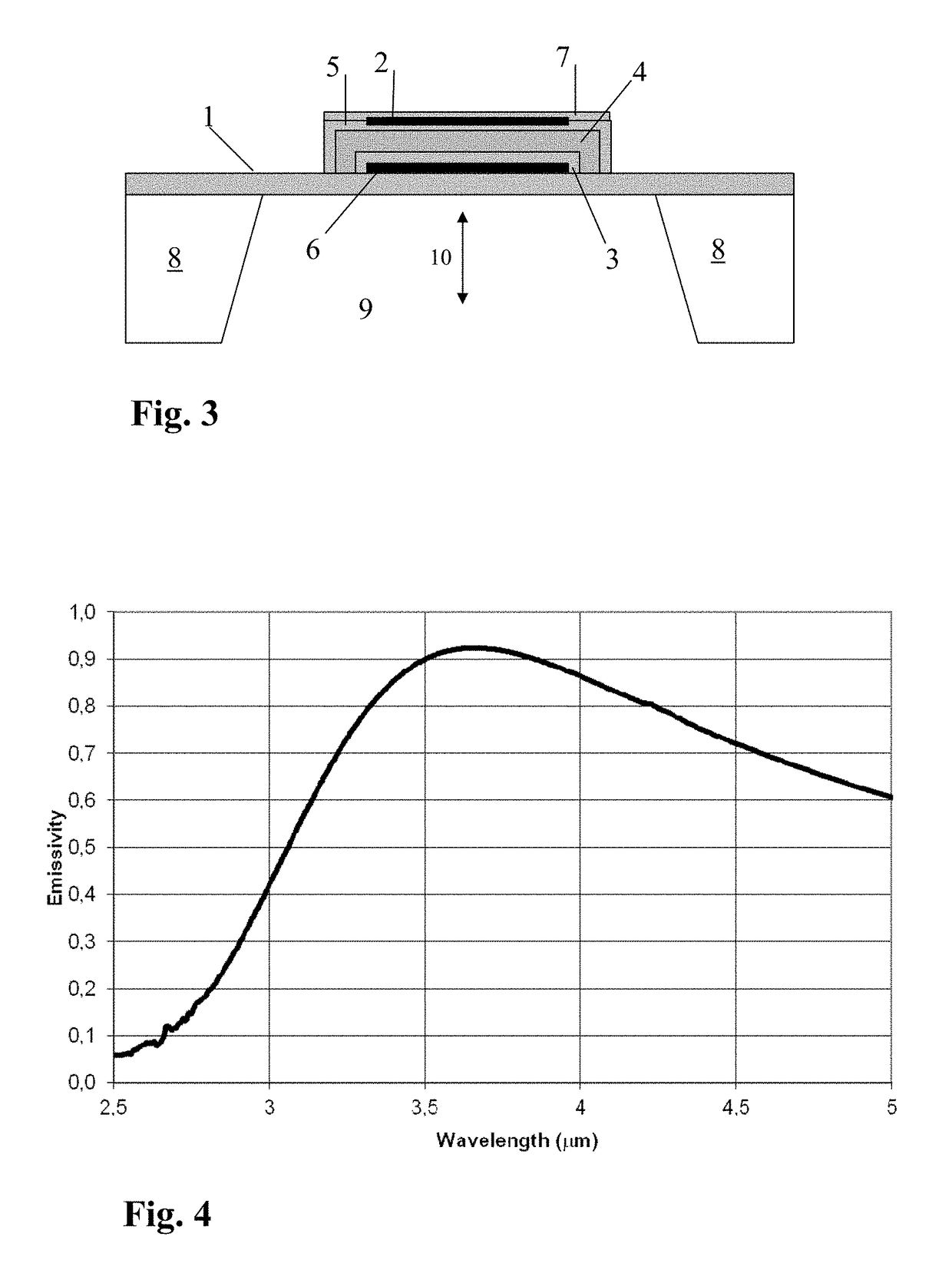Layered structure for an infrared emitter, infrared emitter device and detector
a technology of infrared emitter and layered structure, which is applied in the direction of optical radiation measurement, instruments, spectrophotometry/monochromators, etc., can solve the problems of poor efficiency, low emissivity, and difficult manufacture of optical layered structures suitable for emitter use, so as to reduce the thermal mass of the layered structure, reduce the effective refractive index, and achieve sufficient lossiness
- Summary
- Abstract
- Description
- Claims
- Application Information
AI Technical Summary
Benefits of technology
Problems solved by technology
Method used
Image
Examples
second embodiment
[0076] a detector component is manufactured, which comprises the layered structure described above as well as means connected to the layered structure for measuring the temperature of the layered structure. For example, thermocouples connected in series can be used as temperature measuring means.
third embodiment
[0077] a filter, i.e. a reflector component is manufactured, which is suitable for reflecting electromagnetic radiation, in such a way that the reflective index changes as a function of the wavelength of the radiation being reflected.
[0078]Within the scope of the invention, solutions deviating from the embodiments can also be envisaged. For example, it is possible to manufacture several intermediate layers 4 and shielding layers 1, 3, 5, and 7 in the layered structure. Several partially transparent layers 6 can also be manufactured, in such a way that these layers are separated to correspond to the example of FIG. 1 or 2 each by its own intermediate layer 3, 4, 5 (FIG. 1), or 14 (FIG. 2).
PUM
 Login to View More
Login to View More Abstract
Description
Claims
Application Information
 Login to View More
Login to View More - R&D
- Intellectual Property
- Life Sciences
- Materials
- Tech Scout
- Unparalleled Data Quality
- Higher Quality Content
- 60% Fewer Hallucinations
Browse by: Latest US Patents, China's latest patents, Technical Efficacy Thesaurus, Application Domain, Technology Topic, Popular Technical Reports.
© 2025 PatSnap. All rights reserved.Legal|Privacy policy|Modern Slavery Act Transparency Statement|Sitemap|About US| Contact US: help@patsnap.com



